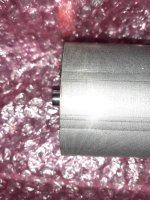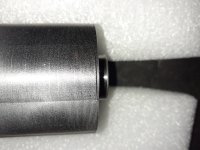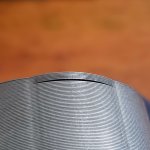Does delamination resulting in 0.2-0.3mm gap and some superficial scratches justify replacement of IPM rotor? Google AI says possible shorts caused by scratches will increase eddy currents despite the fact that all of the laminations are shorted together by magnets and axle according to measurements
The caliper kept sticking to the magnets during bearing gap measurements.
Haven't seen anyone wrapping the rotor with protective cover during repairs.
The caliper kept sticking to the magnets during bearing gap measurements.
Haven't seen anyone wrapping the rotor with protective cover during repairs.








